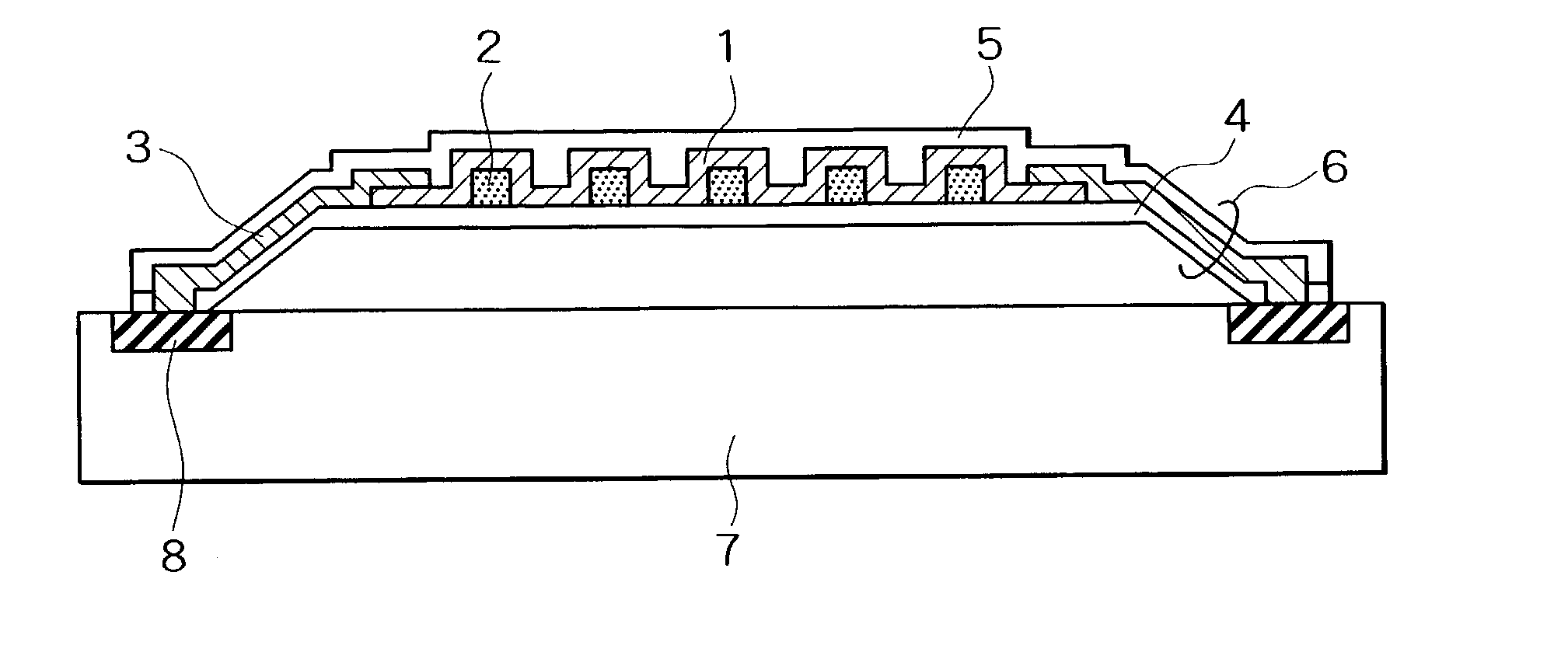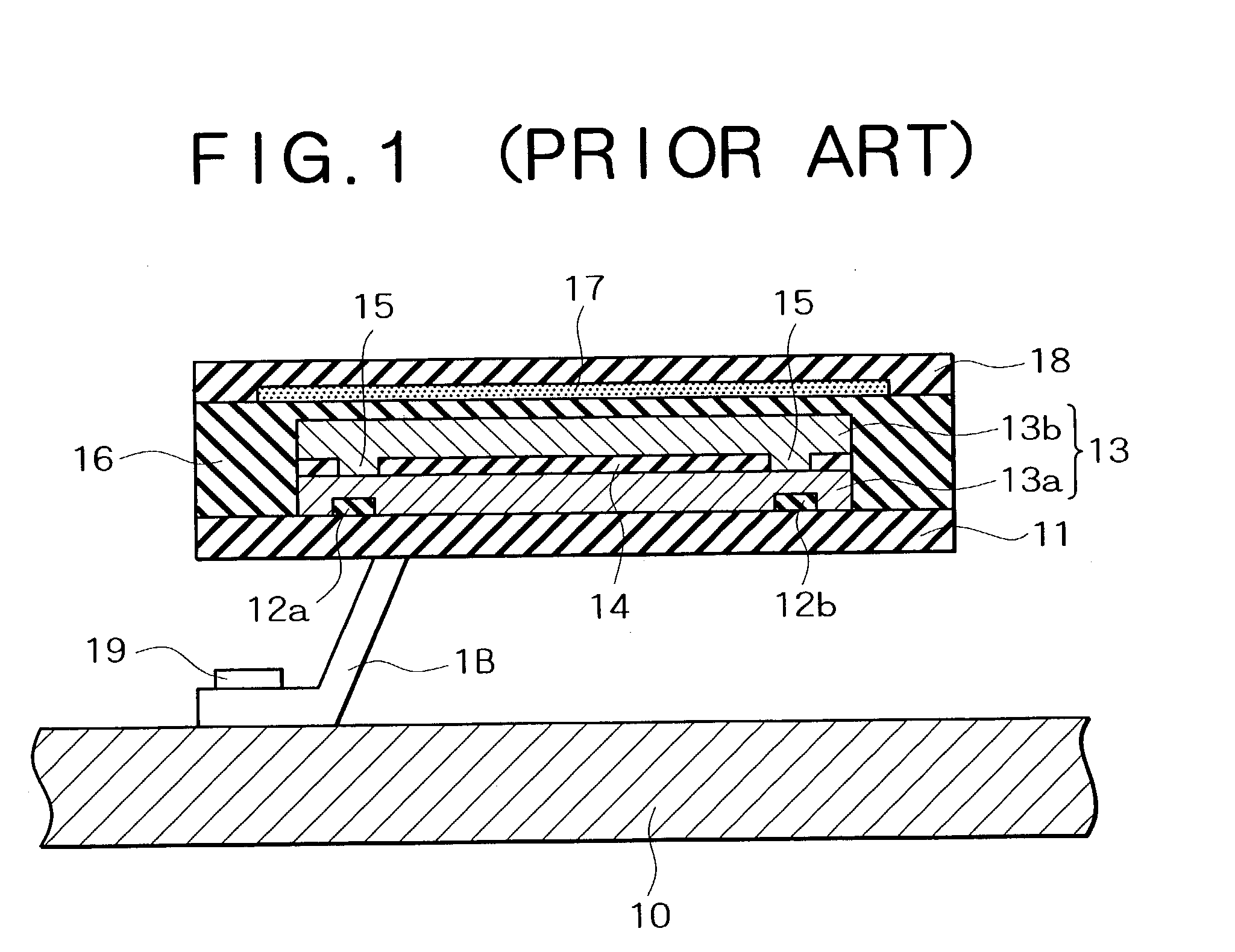Bolometer-type infrared solid-state image sensor
a solid-state image sensor and infrared technology, applied in the field of thermal can solve the problems of increased noise in the bolometer thin film, inability to reduce noise, and large size of infrared solid-state image sensors, etc., to achieve low noise, optimize the resistance temperature coefficient, and improve the effect of volum
- Summary
- Abstract
- Description
- Claims
- Application Information
AI Technical Summary
Benefits of technology
Problems solved by technology
Method used
Image
Examples
first embodiment
[0025] [First Embodiment]
[0026] The bolometer-type infrared solid-state image sensor according to the first embodiment of the present invention will be described with reference to FIGS. 2 and 3. FIG. 2 is the schematic cross-sectional structural view of a unit pixel of the bolometer-type infrared solid-state image sensor according to the first embodiment of the present invention, and FIG. 3 is the plan view of the diaphragm that is the light-receiving section of the unit pixel. The bolometer-type infrared solid-state image sensor of the present invention is constituted by forming a plurality of the unit pixels in an array state.
[0027] Specifically, the diaphragm that is the light-receiving section stands with a self-sustaining manner in a region corresponding to one pixel of a semiconductor substrate 7, where a readout circuit has been fabricated and which is made of silicon and the like, as shown in FIG. 2, with a gap for heat isolation between the diaphragm and the semiconductor s...
second embodiment
[0033] [Second Embodiment]
[0034] Next, the bolometer-type infrared solid-state image sensor according to the second embodiment of the present invention will be described referring to FIG. 4. FIG. 4 is the plan view of the diaphragm that is the light-receiving section of the unit pixel of the bolometer-type infrared solid-state image sensor according to the second embodiment of the present invention.
[0035] In the above-described first embodiment, the stripe-shaped convex sections 2 have been provided in the direction crossing the electrical current direction of the bolometer thin film 1. However, this embodiment is characterized in that a plurality of the convex sections 2 running in the striped-shape are provided in the same direction as the electrical current direction of the bolometer thin film 1 and the bolometer thin film 1 is formed thereon. Selection of material, dimensional conditions, and the like are the same as the first embodiment described above.
[0036] With such a struct...
PUM
 Login to View More
Login to View More Abstract
Description
Claims
Application Information
 Login to View More
Login to View More - R&D
- Intellectual Property
- Life Sciences
- Materials
- Tech Scout
- Unparalleled Data Quality
- Higher Quality Content
- 60% Fewer Hallucinations
Browse by: Latest US Patents, China's latest patents, Technical Efficacy Thesaurus, Application Domain, Technology Topic, Popular Technical Reports.
© 2025 PatSnap. All rights reserved.Legal|Privacy policy|Modern Slavery Act Transparency Statement|Sitemap|About US| Contact US: help@patsnap.com



